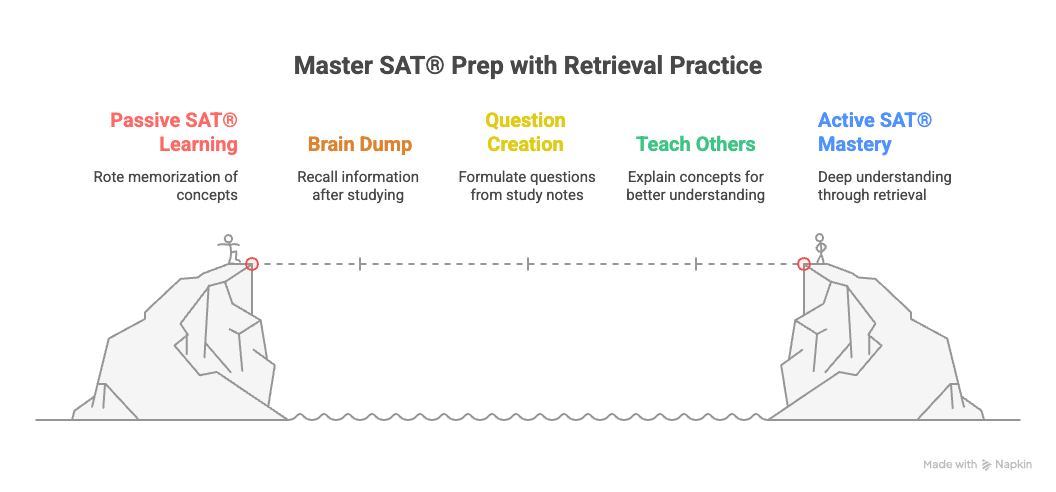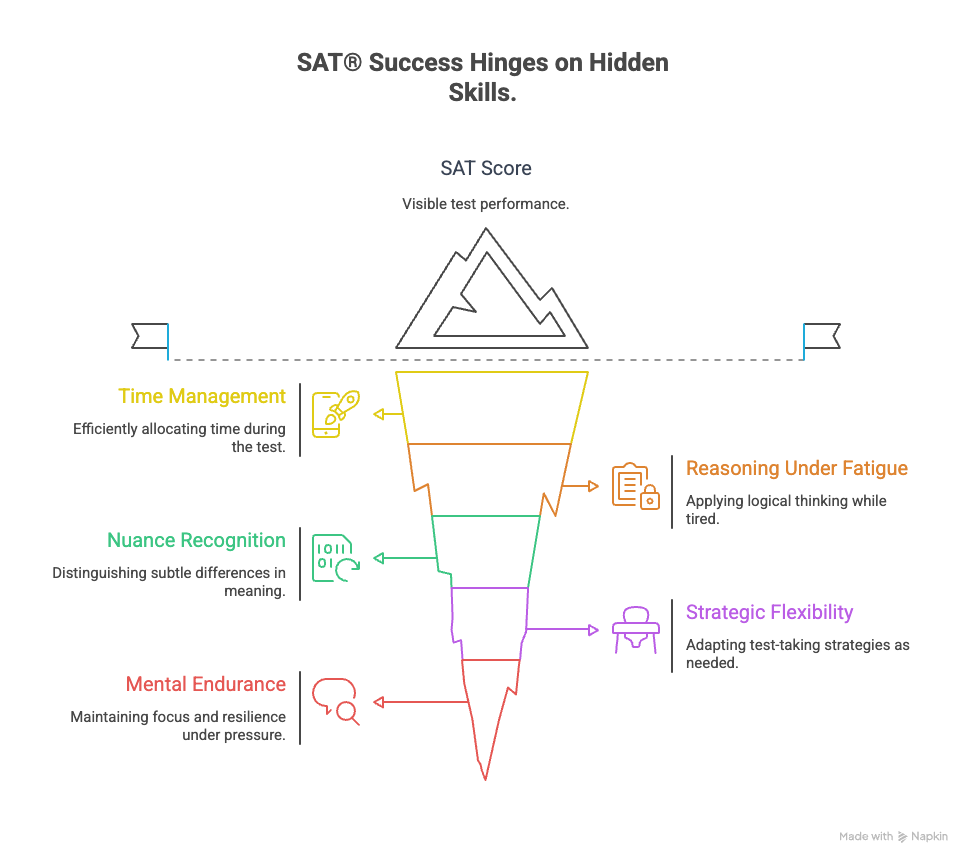You’ve read the notes for your SAT® prep. You’ve highlighted the key facts. You feel like you understand it. But then the test comes, and your brain goes blank.
What happened? You didn’t forget. You never actually learned it.
Because re-reading isn’t mastery. Highlighting isn’t thinking. And comfort isn’t comprehension. True learning for the SAT® begins when you retrieve what you’ve already forgotten. This is a crucial shift in SAT® study strategies.
The Psychology of Retrieval Practice for SAT® Prep
Cognitive psychologists Roediger & Karpicke (2006) ran a study comparing two groups:
- Group A studied a passage multiple times.
- Group B studied once, then practiced retrieving what they remembered, with no notes.
A week later, Group B crushed the test. Why?
"Retrieval itself produces learning. Actively reconstructing knowledge strengthens memory traces and makes them easier to access later." — Roediger & Karpicke, 2006
In other words: The struggle to remember is the learning, especially valuable for SAT® prep and building mental resilience.
Why Passive Review Fails for SAT® Study Strategies
Re-reading and re-highlighting feel safe. You’re seeing familiar words, and it feels like fluency. But this is called the fluency illusion, mistaking recognition for recall.
You’re not learning the SAT® material. You’re learning to recognize it in a low-pressure, non-test context. And that’s why it falls apart under stress, impacting your SAT® and mental resilience.
Memory is Like a Muscle for SAT® Prep
When you lift weights, the muscle doesn’t grow while lifting. It grows when it recovers.
Same with memory:
- The forgetting.
- The retrieval.
- The reconstruction.
That’s the growth process for effective SAT® study strategies. Learning feels harder when it’s truly working.
Enter: Interleaving and Spacing for SAT® Study Strategies
Most students study like this:
- Focus on one topic at a time.
- Repeat until it feels comfortable.
- Move on.
But the brain doesn’t thrive on repetition. It thrives on difficulty, variety, and delay. These are advanced SAT® study strategies.
Interleaving for SAT® Prep
Mix up problem types. Switch between concepts.
Instead of doing 10 algebra questions in a row for the SAT®, try: 1 algebra question then 1 geometry question then 1 data analysis question, and then repeat.
This forces your brain to recalibrate, not just cruise, significantly improving your SAT® prep.
Spacing Effect for SAT® Memory
Wait before you review again. The longer the gap, the harder the retrieval, and the stronger the memory for SAT® concepts.
Don’t aim to remember immediately. Aim to almost forget, and then retrieve. This is a powerful technique for SAT® and mental resilience.
How to Use Retrieval in Your Own SAT® Prep
1. Brain Dump After SAT® Study
Close the book. Write or speak out everything you remember about an SAT® topic. Then check what you missed. That’s your weak spot.
2. Create Practice Questions for SAT® Concepts
Don’t just read notes; ask questions from them. Even better: make flashcards with questions, not definitions.
Use tools like:
- Anki (for spaced repetition).
- Quizlet (for self-testing).
- Sherpalai’s daily micro-retrieval drills (if you want it built in for your SAT® prep).
3. Teach It to Someone Else for Better SAT® Learning
If you can teach it clearly, you’ve retrieved and organized it. "If you can’t explain it simply, you don’t understand it well enough." This is a profound SAT® study strategy.






